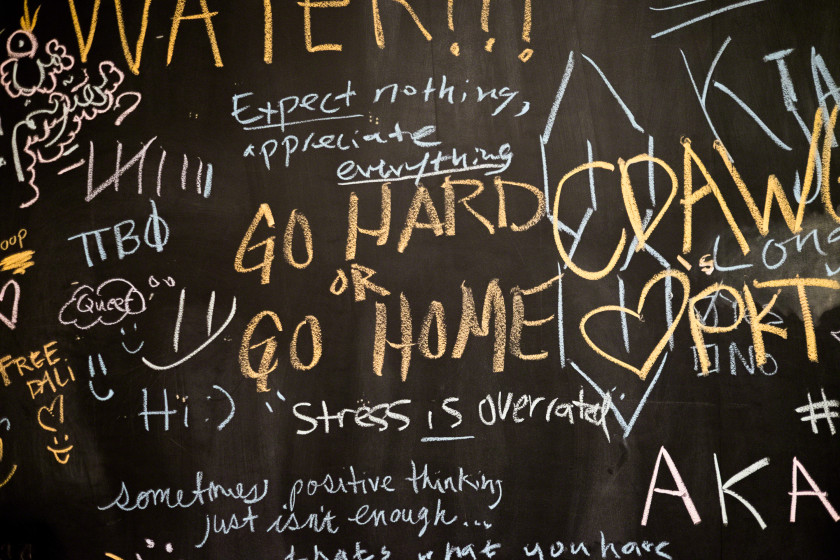Job hunting in the United States might be a bit different to what you’re used to back home. Here’s everything you can expect…
Landing a graduate job after studying in the US can be a complicated affair. You’ll need to get a different visa in order to stay, and you’ll also need to get a company to sponsor you. But no need to worry – we’ve covered all of this in this guide.
The truth is, it’s more difficult for US employers to hire international students, so the whole process can take a bit longer – up to a year in some extreme cases. You may find you’re unsuccessful because companies aren’t willing to take on your visa requirements, or worry that your English skills won’t be good enough or that you will leave after a short period of time. You shouldn’t let this put you off though, because certain companies will really value what you’ve learned, like how to adapt to new situations or foreign language skills.
Still, you will probably need to start looking for a job a bit earlier than native US students, because it can take more time to find employers willing to sponsor you – so whatever you do, don’t leave looking for a job until after graduation. It might be the case that you need to work even harder than other students to submit the perfect application – we’ll show you how later on.
Where to look

First off, you need to know exactly where to look for jobs:
Websites
Nowadays, the vast majority of job postings are advertised online. Many of these websites are free to use, so you should steer clear of websites that charge a fee. The most well-known websites like Monster and CareerBuilder are generally favoured by large companies because they’re seen as more professional, so you’ll often see their job postings there. Smaller openings will tend to appear on websites like Craigslist, which are updated regularly.
One website that you should definitely use is LinkedIn, because you can both search for jobs and create a professional online profile especially for prospective employers. Lots of recruiters browse the profiles listed on LinkedIn to fill job postings, so you might also find you get contacted for a job without even applying! Once you’ve created an account, you should complete your profile and add a professional-looking profile picture (preferably a clear, bright headshot). When this is done, your profile will begin to appear in Google searches when you type in your name.
Companies will also have careers pages on their websites which list all current vacancies. If you have your eye on one particular organisation, check back frequently to see if there is anything suitable – sometimes jobs will only be advertised here, so the company can ensure you’re genuinely passionate about them. It’s also useful to follow companies you like on social media websites like Facebook and Twitter, as it’s becoming increasingly popular to see job openings on these sites.
Your university
You should also make the most of the services on offer at your university while you can. Universities typically have their own dedicated careers centres to help their students gain employment once they graduate. You can talk to a professional about what your next steps are, get their expert help and guidance on applications, or arrange a mock interview to practice techniques for later on. They will also be up-to-date on all the best job openings for recent graduates, and might even be able to put you in touch with the companies. Many universities like Brown also offer dedicated careers programs and fairs, where you can learn more valuable tips.
Networking
Networking is another great way to land yourself a job – where a friend or maybe someone you know through your university recommends you for a position. It’s often more effective than applying online via job boards because companies tend to take personal recommendations from their employees quite seriously. Think about who you know in different companies and see if you can get them to help you. However, don’t just directly ask them for a job – that’s a bit rude! Instead, politely ask whether they know of any openings that might suit you, or whether they can put you in touch with someone else there who can help you.
We know networking isn’t for everyone, but if you are interested there are lots of ways you can do it. Get to know people at careers fairs or by utilising your contacts to set up meetings. You can also network online through websites like LinkedIn, which you can use to contact people at your favourite company. Networking is something you’ll need to do throughout your career, so it’s useful to start making valuable connections with people who might be able to help you in future.
Large companies
It’s also important to know where the most international graduate-friendly jobs are. Some states, like New York and California, are seen as more friendly to international workers. That’s because they’re usually home to the biggest companies, like Apple and Google, which typically hire more graduates from abroad. They have the resources to deal with your visa requirements, and they also tend to have offices around the world so they appreciate foreign language skills and global outlooks. Diversity is also hugely important to larger companies in the US, so they will be keen to broaden the range of people they hire – opening the door to a world of possibilities for you.
Resumes and cover letters

Next, you need to send your applications. In the US, you’ll typically need to send two key documents: a cover letter and a resume.
Resumes
Also known as a CV or curriculum vitae, a resume is a really simple, easy-to-read summary of your professional life so far. On it, you can include a short, well-written profile about your career goals and accomplishments, as well as details on your educational background, previous jobs and how they can contact you (a phone number and email address are best). In general, you should aim to have a resume that’s no more than two pages long.
To begin, decide what kind of layout you want. While there are informal guidelines you should aim to follow, there aren’t any official rules on how it should look. But consider this: companies typically spend less than 30 seconds reading your resume because they’re so short on time. For this reason, the layout you choose needs to be clear. You should use a font that’s both large enough and easy to read (‘Arial’ in size 11, for example), and you should also set it out in distinct sections. You can see examples of resumes here to find inspiration to make your own.
When you’re a recent graduate, you should include your educational background up to high school – don’t go all the way back to where you studied when you were 10 years old. If you don’t have much professional experience when you’re fresh out of university, you’ll probably need to spend the most time on this section. Include the names of where you have studied, and under each one write about your exam results and any other key skills you learned (like public speaking or working with large datasets) in bullet points. Try to focus on the company’s perspective and highlight any skills that you feel would be most interesting to them and relevant to the role.
You can follow the same format for your work section, where you list the jobs you have held and discuss your key responsibilities. It’s completely fine to include part-time roles and other placements that you might think are irrelevant at first, like working in a restaurant or leafleting around campus. That’s because while they may not be directly linked to your chosen career path, they will show that you are hardworking and have developed transferable skills that you can apply to future roles.
Both the education and work sections should be listed chronologically from most recent at the top to least recent at the bottom, with the dates listed. If you have any long gaps between placements, you should expect the employer to ask you why that is, so be prepared. Make sure you use American spellings throughout, and try to get a local friend to check your resume for errors. When you’re done, it’s best to convert the file into a PDF format so you can be sure nothing will be out of place when the recruiter receives it.
Cover letter
Although cover letters are becoming less common, it’s likely that you’ll have to do one at some point in your professional career. A cover letter introduces you to the recruiter, and is used primarily by applicants to persuade recruiters that they have the necessary skills for the role and to show a bit of personality. It shouldn’t just be a reproduction of your resume, but instead you should dive a bit deeper and focus on the relevant examples that you feel would make you a great candidate – make sure you read the job description again thoroughly. We’ll admit that writing an amazing cover letter can be quite hard – everyone struggles with them, even professional writers – so it’s important to take your time and really tailor it to your application.
You should aim to start your cover letter by addressing the recruiter who will read it directly. Usually their name will be displayed on the job posting, but if it’s not, try and find out by emailing the company directly or looking on their LinkedIn profile. It’s really important that you try to do this because it shows you’ve put the effort in. If you really can’t find it, you can address your letter using more standard phrases. ‘To whom it may concern’ and ‘Dear Sir/Madam’ are used widely, while more modern ways like ‘To the [company] team’ can be used in more informal settings. Aim to keep your cover letter up to one page in length – you can find examples here. Again, it’s best to have your cover letter checked by a native English speaker before you submit it.
Something you should note: in the same way that you will use the internet to research companies, the companies may well use the internet to research you. Before you send your applications, ensure that everything that is publicly available about you online will put you in a good light – just Google your full name in quotation marks and see (e.g. “John Smith”). To be extra safe, it’s best to make your social media accounts private, so all the employer can see is what you want them to – a really impressive LinkedIn profile and a few examples of your work. Lots of people lose job opportunities because of what employers see about them online, so it pays to be careful.
Interviews

If you pass this initial step, the company will invite you for the interview stage. These days, it’s growing increasingly more common for there to be multiple assessment rounds during this process, so you could have two or more interviews, as well as other tasks like psychometric tests, writing exams and assessment days, spread over a few days. Sometimes you will also be interviewed on the phone, on Skype or in groups. Whatever happens, make sure that you are ready for your interview at least 10 minutes before, and that you wear appropriate business attire – if in doubt, it’s always better to overdress.
Interviews will, of course, vary between companies, so it can be hard to predict exactly what to expect. Some businesses will conduct very informal interviews, while others will have highly structured ones where the interviewer sticks to a set list of questions. That said, you can generally expect to be asked to tell the interviewer a bit about your background as an icebreaker. Monster has a great guide on the best ways to tackle this and other likely questions.
You may feel uncomfortable with American-style interviews at first if you come from a different culture, but don’t worry – it’s normal. In general, interviews in the US will require you to really sell yourself, so you will have to talk about your qualifications, awards and long-term goals, as well as your extra-curricular experience and hobbies, at length. It’s very important that you try to appear confident even if you’re feeling nervous, because US companies tend to value good communication skills. To do this, you should think about how your body language will make people perceive you, and remember to maintain eye contact. Ensure you speak slowly and clearly, too.
You will feel much more confident if you come to an interview well prepared, so get ready for them well in advance. Make sure you research the organisation’s website thoroughly and try to memorise a few facts and figures, and also have a think about who their competitors might be and what kinds of challenges they face. It’s also a good idea to print a few copies of your application and CV so you’ll have them ready if an interviewer wants to see them again.
During the interview, you should try to link your answers back to the initial job description as much as possible – it’s what they’re looking for, after all! Don’t be afraid to use your status as an international student to your advantage, because it’ll show that you are independent and adaptable with great language skills. Once the interview is over, you will be asked whether you have any questions for the interviewer. This is a very important step because it’ll show that you genuinely care about the company, so don’t miss out. If you need some inspiration, you can find some good examples of questions to ask here. Make sure you then find out when you can expect to hear the result or what the next steps are before you leave. It’s also a great idea to send a thank you note to your interviewer around 24 hours afterwards. Once that’s done, all you have to do is wait – good luck!
And finally…

While you should be well on your way to getting a graduate job in the US with this guide, it’s important to note that the market is extremely competitive. You may be sending applications for months without receiving any responses, so it’s absolutely normal to feel frustrated and like you want to give up at times. It’s up to you to make sure you don’t! If you continue to put the effort in and have a positive attitude, it won’t be long before you’re rewarded with offers from companies who want to take you on.
